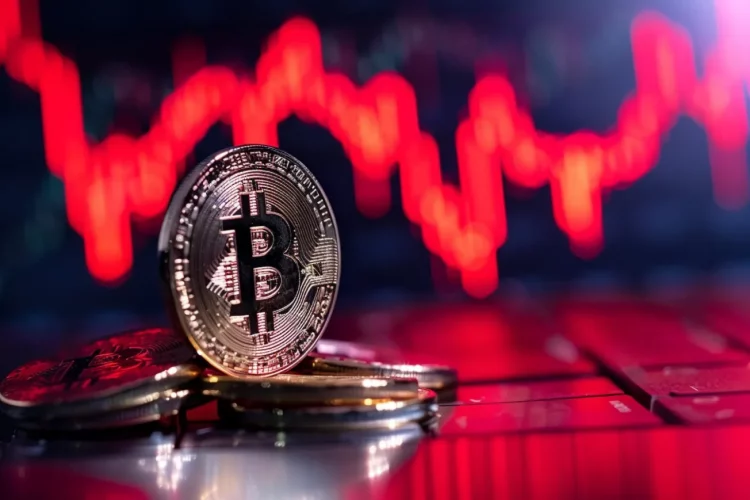Introduction
Stablecoins, a type of cryptocurrency designed to maintain a stable value, have quickly become a crucial component of the broader cryptocurrency ecosystem. Unlike volatile digital assets like Bitcoin or Ethereum, stablecoins are typically pegged to stable assets such as fiat currencies (USD, EUR, etc.) or commodities (gold, silver, etc.) to minimize price fluctuations. This price stability makes them appealing for a variety of uses including remittances, trading pairs, decentralized finance (DeFi) applications, and as a store of value.
However, the stability of a stablecoin is fundamentally tied to the adequacy and integrity of the underlying asset reserves that back it. Without sufficient reserves, a stablecoin may fail to maintain its peg, leading to investor loss, market instability, and regulatory scrutiny.
This article explores how stablecoin issuers can ensure that they have adequate asset reserves to guarantee the stability of their coins. We will examine various reserve mechanisms, governance structures, and regulatory considerations that impact the sustainability of stablecoins.
1. Understanding the Concept of Stablecoins and Their Reserves
What Are Stablecoins?
Stablecoins are cryptocurrencies designed to maintain a fixed value relative to a specific asset, most commonly a fiat currency such as the US dollar. They seek to provide the benefits of cryptocurrencies — fast transactions, low fees, and decentralization — while minimizing the price volatility that characterizes traditional cryptocurrencies like Bitcoin or Ethereum.
There are three primary types of stablecoins:
- Fiat-Collateralized Stablecoins: These stablecoins are backed 1:1 by a reserve of fiat currency (such as USD) or assets that are pegged to fiat currencies.
- Example: Tether (USDT) and USD Coin (USDC).
- Crypto-Collateralized Stablecoins: These are backed by other cryptocurrencies, often in a decentralized manner, to create stability through smart contracts.
- Example: Dai (backed by Ethereum and other cryptocurrencies).
- Algorithmic Stablecoins: These stablecoins are not backed by any collateral but instead rely on algorithms and smart contracts to adjust the supply of the coin in response to market demand to keep the price stable.
- Example: TerraUSD (UST), though it recently collapsed due to flaws in its design.
For the purpose of this article, we will focus primarily on fiat-collateralized stablecoins, as their stability is directly tied to the assets held in reserve.
The Importance of Asset Reserves in Stablecoins
The stability of fiat-collateralized stablecoins depends on the reserves held by the issuer to back the supply of coins. If a stablecoin issuer does not have enough assets to match the circulating supply of its tokens, it will lose its peg to the underlying asset. This situation may lead to a run on the stablecoin, similar to what happens in traditional banking during a liquidity crisis, where users try to redeem their coins for fiat currency, causing the price to deviate from the peg.
Adequate reserves are essential not only for maintaining stability but also for fostering trust and confidence among users and investors. Without transparency and sufficient backing, stablecoins could suffer from market skepticism, loss of value, or even total collapse.
2. Key Considerations for Stablecoin Reserves
To ensure stablecoin stability, issuers must address several key factors related to their reserves:
a. Reserve Composition
The type of assets used to back the stablecoin directly affects its security, liquidity, and stability. Common options include:
- Cash or Cash Equivalents: Including bank deposits, money market funds, or short-term government securities. These assets are highly liquid and secure, making them ideal for backing stablecoins.
- Bonds and Treasuries: Long-term government bonds or other low-risk debt instruments offer stable returns but may not be as liquid in emergencies.
- Gold or Commodities: Some stablecoins are backed by commodities like gold, which may offer price stability over the long term, though they are less liquid and subject to market fluctuations.
- Crypto Assets: Some issuers back their stablecoins with cryptocurrencies like Bitcoin or Ether. While these can provide significant value, their volatility can be a risk unless structured within a robust system.
b. Liquidity and Redemption Mechanisms
The liquidity of the reserves is critical. If users are unable to redeem their stablecoins for fiat currency at a 1:1 ratio, the trust in the stablecoin’s stability will collapse. Stablecoin issuers need to implement liquidity protocols that ensure the redemption process is seamless, reliable, and fast.
- Automated Market Makers (AMMs): Decentralized protocols like Uniswap or Curve can help provide liquidity for stablecoin transactions and redemptions.
- Redemption Rights: Ensuring that stablecoin holders can redeem their tokens for fiat currency at any time is essential. This is where the peg to the fiat currency comes into play—issuers must ensure that enough fiat or equivalent assets are available to cover all tokens in circulation.
c. Reserve Management and Monitoring
Constant monitoring of reserves is essential to prevent shortfalls. Issuers need to maintain real-time audits and reporting to confirm the reserves’ adequacy and prevent fraud. This involves:
- Third-Party Audits: Independent audits by reputable firms ensure transparency and accountability.
- Transparency and Reporting: Issuers must publicly disclose their reserve holdings on a regular basis. This builds trust with the community and users.
- Dynamic Adjustments: Reserve management strategies must allow for rapid rebalancing, especially in times of market volatility.

3. Legal and Regulatory Frameworks for Stablecoin Reserves
Regulators around the world have begun to scrutinize the stablecoin market to ensure that issuers maintain sufficient reserves and meet relevant financial standards. Regulatory frameworks are essential for providing certainty to issuers and investors, and for ensuring the stability of the global financial system.
a. International Regulatory Guidelines
At the global level, institutions like the Financial Stability Board (FSB) and the International Monetary Fund (IMF) have published guidelines to ensure that stablecoins remain robust and safe. For example:
- Basel III Requirements: Basel Committee on Banking Supervision’s principles for stablecoin reserves may recommend maintaining liquidity buffers or having stricter reserve requirements.
- G7 Stablecoin Task Force: This group has worked to set international regulatory standards for stablecoins to mitigate risks to financial markets.
b. National Regulatory Approaches
Different countries have taken different approaches to regulating stablecoins:
- United States: In the U.S., the Office of the Comptroller of the Currency (OCC) has granted trust powers to certain stablecoin issuers, requiring them to hold reserve assets with approved banks and subjecting them to regular audits. The U.S. Treasury has also pushed for clearer guidelines to ensure that stablecoins operate within the bounds of existing financial regulations.
- European Union: The EU’s MiCA (Markets in Crypto-Assets) regulation aims to provide a comprehensive legal framework for crypto assets, including stablecoins. It focuses on ensuring transparency, ensuring that stablecoins are backed 1:1 by reserve assets, and imposing strict requirements on the issuance and management of reserves.
- Asia: Countries like Singapore and Japan have been proactive in regulating digital assets, with stablecoin issuers required to comply with strict reserve and auditing regulations.
c. Consumer Protection and Transparency
Regulators also play a key role in ensuring that consumers are protected and that stablecoins maintain the necessary transparency. This includes:
- Disclosure Requirements: Requiring issuers to provide detailed reports on the composition and value of their reserves.
- Consumer Safeguards: Ensuring that users are informed about the risks of holding stablecoins and have clear pathways to resolve disputes.
4. Ensuring Reserve Sufficiency: Best Practices
To guarantee the stability of stablecoins, issuers must adopt best practices that focus on the reliability, security, and liquidity of their reserves.
a. Regular Audits and Transparency
Issuers should undergo regular audits by independent third-party auditors who can verify that the reserve assets match the outstanding supply of stablecoins. Public disclosures should be made available to users and investors on a frequent basis, ensuring they can trust the system. For example, USDC and Tether regularly release reserve attestations through third-party audit firms.
b. Emergency Liquidity Protocols
In times of extreme market stress, issuers must have pre-established mechanisms for accessing emergency liquidity. This could involve having backup funding from institutional investors, creating liquidity pools, or ensuring that a portion of reserves is held in highly liquid assets.
c. Clear Governance and Risk Management
A strong governance framework is essential to ensure the integrity of the reserve management process. This includes risk management protocols to identify potential vulnerabilities in the reserve system, as well as emergency response plans to address any imbalances between the supply of tokens and the value of the reserves.
5. The Future of Stablecoin Reserves
As the stablecoin market continues to evolve, ensuring the adequacy of asset reserves will be an ongoing challenge. Future developments may include:
- Greater Integration with Traditional Finance: Stablecoin issuers may partner with traditional financial institutions to ensure reserves are adequately managed, increasing both liquidity and trust in the market.
- Blockchain Auditing Innovations: Advancements in blockchain-based auditing systems may allow for real-time, verifiable, and immutable records of reserves, improving transparency and reducing fraud.
- Global Standardization: The global regulatory landscape for stablecoins is still developing, and greater international cooperation may result in unified standards for reserve requirements.
Conclusion
Stablecoins play a vital role in the cryptocurrency ecosystem, providing a bridge between the digital and traditional financial worlds. However, their stability depends heavily on the reserves that back them. By adopting transparent reserve management strategies, maintaining adequate liquidity, complying with global regulatory standards, and ensuring robust governance, stablecoin issuers can ensure that their coins remain stable, secure, and trusted by users around the world.
As the stablecoin market matures, issuers and regulators must work together to safeguard the integrity of the system, fostering a resilient digital economy that can withstand shocks and volatility.

















































